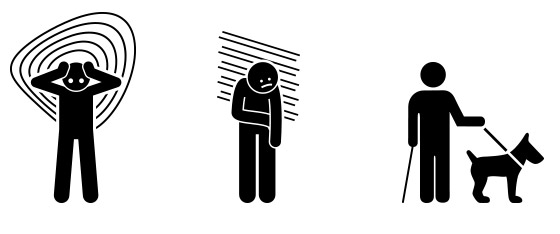Emotional Support and Service Animals
In the wake of mental health awareness, airlines are taking a leap and making changes to their regulatory frameworks. Similarly, the convenience of a passenger with physical disability has been a concern that is addressed by the airlines efficiently. Validating the concerns, the US Department of Transportation states that according to the Air Carrier Access Act, airlines cannot deny an emotional support and service animal the right to fly if the passenger provides the necessary documents and verbal assurance in case of an emotional support animal and a service animal respectively. As a consequence, animals are flying increasingly across destinations in the US and around the globe.

Emotional Support Animals
An emotional support animal is a companion animal that assists passengers diagnosed with any psychological disability
Rules for flying with an Emotional Support Animal
Most of the airlines that allow emotional support animals to fly restrict their number to one animal per passenger.
Generally, a dog or cat and in some cases a trained miniature horse is accepted as an emotional support animal by airlines. The animal must be 4 months or older to qualify for flying.
The animal must be hygienic and should not exhibit disruptive behaviors.
During the flight’s duration, the animal must be kept between the feet of the passenger, or under the seat or be accommodated on the lap.
A proper documentation is required by the airline to approve an emotional support animal flying onboard. The document includes an ESA letter that must clearly state:
- The passenger is diagnosed with a mental or emotional disability as recognized by the Diagnostic and Statistical Manual of Mental Disorders.
- The emotional support animal is required to accompany the passenger on the flight to assist him/her through the flight’s duration or at the travel destination.
- It should include the details of the mental health practitioner assisting the passenger through his/her disability. The credential of the mental health practitioner as printed on the official letterhead is vital to establish the need of the emotional support animal for the passenger.
- The letter must be issued within one year of the travel date.
Service Animals
A service animal is an animal that is trained to perform a task(s) and provide assistance to the passenger with physical disability.
Rules for flying with a Service Animal
Most airlines restrict the number of service animals flying in the cabin to one.
A dog, cat or a miniature horse is generally categorized as a service animal by airlines.
A service animal must be fully trained, clearly identifiable by a tag and secured with a leash at the airport or during the flight’s duration.
A service animal that cannot fit between the passenger’s feet or on the laps is denied boarding.
Flying with a service animal does not require a formal documentation. A credible verbal assurance by the passenger with disability should suffice. However, when the flight duration exceeds 8 hours, the airline requires the passenger to present an Animal Sanitation Form. In some cases, if the airline’s representative is not satisfied with the verbal assurance, a passenger may be asked to present the animal’s Veterinary Health Form or Immunization Record and Animal’s Behavior Form.